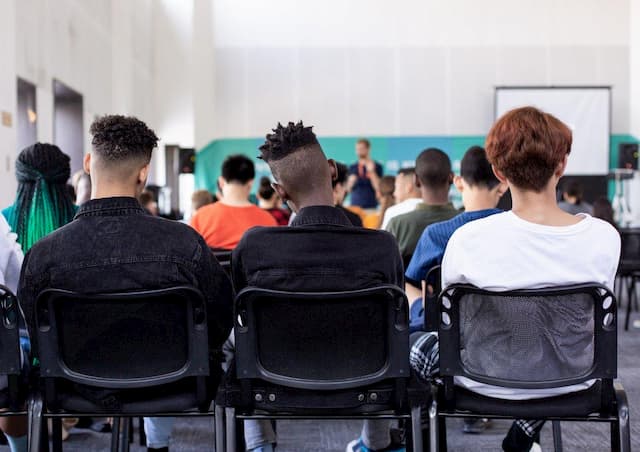The Differences between countries going back to school under the coronavirus Covid-19 epidemic
The start of the school year took place in France on Tuesday 1st September, with a specific protocol intended to guarantee the health security of children, in the complex context of the current coronavirus epidemic. In Europe and in the rest of the world, the resumption of school has been organised in a very different way, sometimes radically opposed: in Sweden, the school has already started in an almost normal way, and in the United States, the re-entry has started. is done entirely remotely, causing another failure on Zoom. Countries are taking different approaches to minimize contagion. Wearing a mask, school at home online, with uncertainty, or as usual, without any barrier measures, we are offering you a trip around the world from the start of the school year to the time of COVID-19.
In Italy and Spain, the start of the school year is synonymous with uncertainty
In Spain as in Italy, schools will open in the second half of September. These two neighbouring countries of France, very hard hit by the epidemic last March, have implemented very significant restrictions to stem the contagion. The fear of re-confinement is present in these countries, and the return to school is therefore experienced with a lot of concerns.
In Italy, the instructions are still very vague. Some educational establishments are still in the process of widening their walls and welcoming children while respecting social distancing more easily. Entry times will be slightly delayed. Wearing a mask will be compulsory for those arriving and leaving school, but they can be removed during lessons if the distance between the offices is respected. A combination of distance learning and on-site teaching will also aim to control the number of children per class.
In Spain, children will return to classrooms after very restrictive confinement and several months without school. Parents are very worried and prepare to resume homeschooling in the event of re-containment or school closures due to positive cases. A back-to-school boycott movement is developing because of these uncertainties and the fear of contagions. The measures are very drastic: face masks will be compulsory in class for children aged six and over throughout the school day. Students should wash their hands at least five times a day. Temperature checks will be carried out every morning, at school or at home.
Some are nevertheless optimistic about the risks: a study on the number of infections in holiday camps this summer in Spain shows a low rate of contamination of children. The authors, doctors from Sant Joan de Déu Hospital in Barcelona, nevertheless state that the results cannot be extrapolated to school environments because the activities of these camps took place mainly outdoors and in groups of less than 10 children.
Germany and the Netherlands: no masks at school
In the Netherlands, primary and secondary courses take place in class. Neither students nor teachers are required to wear masks. Some teachers have been reluctant to return to work and a number of schools have introduced their own mask requirements.
If a student tests positive for COVID-19, their entire family must adhere to home isolation for 10 days. Children over the age of six who have symptoms should stay home and get tested; younger students can go to school and daycare even with mild symptoms of a cold, but must stay home if they have a fever.
In Germany the question of masks is not unanimous. Wearing a mask is not compulsory for primary school children, and depending on the region and the number of infections per inhabitant, it is compulsory for older children for the first 10 days of school. In transport, children should wear a mask, and classrooms will be ventilated as much as possible. School transport and public transport are doubled to allow children to respect social distancing.
In Norway and Russia: no more homeschooling
In Norway, as in Russia, children will not wear masks either. The Norwegians have set up recreation times on separate grounds and at staggered times to avoid gatherings. The Russians, for their part, stagger the courses in order to avoid overcrowding in the common areas.
In Sweden, the return to normal
Swedish students have not had to confine themselves and are living a normal return to school without wearing a mask, which is not even recommended by the government.
Keeping schools open in the spring did not increase the infection rate compared to neighbouring Finland, and Swedes are confident in studies which show teachers were not more infected than the rest of the country. population. As for the rest of the country, social distancing is the only measure to respect.




